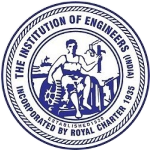Implementation of Computer Vision technique for Crack Monitoring in Concrete Structure
Abstract
Assessment of structural health is essential for safe and efficient functioning of built environment. Physical inspection of structures for its health monitoring is time consuming, costly and risky. Advances in image capturing and processing techniques as well as numerical simulation tools have made computer vision a cost effective and accurate alternative for structural health assessment. Evolution of convolution neural network (CNN) has reduced human effort and made it easy to develop algorithms for identification of structure defects. One of the primary defects in concrete is crack. Concrete cracking occurs due to many reasons like shrinkage, heaving, premature drying, excessive loading etc. and it leads to reduction in strength of structures. This paper presents a computer vision system developed for crack monitoring of concrete cubes subjected to compressive loading. Camera is used to capture real time images when concrete cubes are subjected to loading. Images are further processed using CNN to obtain various features of cracks like numbers, location, length, area etc. Present Computer vision system is developed using LabVIEW and implemented using tensor processing unit (TPU) for better computational efficiency. The outcome of present system demonstrated better and accurate real time monitoring of cracking when concrete is subjected to loading. Proposed computer vision system can be implemented for structural health monitors of real-life civil engineering structures like buildings and bridges.
Downloads
References
Hung P. C, Voloshin A. In-plane strain measurement by digital image correlation. J Braz Soc Mech Sci Eng 2003;25(3):215–2
Babloo Kumar and Sayantari Ghosh, “Detection of Concrete Cracks Using Dualchannel Deep Convolutional Network”, in 11th ICCCNT 2020.
Gopalakrishnan, K., Khaitan, S. K., Choudhary, A., & Agrawal, A. (2017). Deep Convolutional Neural Networks with transfer learning for computer vision-based data-driven pavement distress detection. Construction and Building Materials, 157, 322–330.
Talab, A. M. A., Huang, Z., Xi, F., & Haiming, L. (2016). Detection crack in image using Otsu method and multiple filtering in image processing techniques. Optik, 127(3), 1030–1033. https://doi.org/10.1016/j.ijleo.2015.09.147
Bhattacharjee, S., & Deb, D. (2016). Automatic detection and classification of damage zone(s) for incorporating in digital image correlation technique. Optics and Lasers in Engineering, 82, 14–21. https://doi.org/10.1016/j.optlaseng.2016.01.015
Lee, B. Y., Kim, Y. Y., Yi, S. T., & Kim, J. K. (2013). Automated image processing technique for detecting and analysing concrete surface cracks. Structure and Infrastructure Engineering, 9(6), 567–577. https://doi.org/10.1080/15732479.2011.593891
Rabah, M., Elhattab, A., & Fayad, A. (2013). Automatic concrete cracks detection and mapping of terrestrial laser scan data. NRIAG Journal of Astronomy and Geophysics, 2(2), 250–255. https://doi.org/10.1016/j.nrjag.2013.12.002
Ying, L., & Salari, E. (2010). Beamlet Transform-Based Technique for Pavement Crack Detection and Classification. Computer-Aided Civil and Infrastructure Engineering, 25(8), 572–580. https://doi.org/10.1111/j.1467-8667.2010.00674.x
Rabah, M., Elhattab, A., & Fayad, A. (2013). Automatic concrete cracks detection and mapping of terrestrial laser scan data. NRIAG Journal of Astronomy and Geophysics, 2(2), 250–255. https://doi.org/10.1016/j.nrjag.2013.12.002
Mane, A., & Tade, S. (n.d.). Concrete Structure Analysis and Classification using Image Processing. In International Journal of Advanced Computer Research.
Asifullah Khan, Anabia Sohail, Umme Zahoora, and Aqsa Saeed Qureshi, “A Survey of the Recent Architectures of Deep Convolutional Neural Networks” in Artificial Intelligence Review
Besnard G, Hild F, Roux S. “finite-element” displacement fields analysis from digital images: application to portevin–le châtelier bands. Exp Mech 2006;46 (6):789–803.
Nguyen TL, Hall SA, Vacher P, Viggiani G. Fracture mechanisms in soft rock: identification and quantification of evolving displacement discontinuities by extended digital image correlation. Tectonophysics 2011;503(1):117–28.
Chen J, Zhang X, Zhan N, Hu X. Deformation measurement across crack using two-step extended digital image correlation method. Opt Lasers Eng 2010;48 (11):1126–31.
D. Xie, L. Zhang, L. Bai, Deep learning in visual computing and signal processing, Appl. Comput. Intell. Soft Comput. 2017 (2017) e1320780, https://doi.org/10.1155/2017/1320780.
L. Ying, E. Salari, Beamlet transform-based technique for pavement crack detection and classification, Comput.-Aided Civil Infrastruct. Eng. 25 (2010) 572–580, https://doi.org/10.1111/j.1467-8667.2010.00674.x.
H. Oliveira, P.L. Correia, Automatic Road Crack Detection and Characterization, IEEE Trans. Intell. Transp. Syst. 14 (2013) 155–168, https://doi.org/10.1109/ TITS.2012.2208630
Chou, J. C., O’Neill, W. A. & Cheng, H. D. (1994), Pavement distress classification using neural networks, systems, man, and cybernetics, IEEE International Conference, 1, 397– 401.
S. Chambon, P. Subirats, and J. Dumoulin, "Introduction of a Wavelet Transform Based on 2D Matched Filter in a Markov Random Field for Fine Structure Extraction: Application on Road Crack Detection," in Proceedings of the IS&T/SPIE Electronic Imaging Science and Technology Jose, USA, 2009, pp. 72510A-72510A-12
Sun Y, Pang JH, Wong CK, Su F. Finite element formulation for a digital image correlation method. Appl Opt 2005;44(34):7357–63
C. Feng, M.-Y. Liu, T.-Y. Lee, Deep Active Learning for Civil Infrastructure Defect Detection and Classification, in: 2017 International Workshop on Computing in Civil Engineering. Presented at the 2017 International Workshop on Computing in Civil Engineering (IWCCE 2017), American Society of Civil Engineers (ASCE), Seattle, Washington, 2017
Copyright (c) 2021 Kanani Nikhil, Paresh Patel, harsh kapadiya

This work is licensed under a Creative Commons Attribution 4.0 International License.
I/We agree with the provision of the Bye-Law 118 of The Institution of Engineers (India) which states that copyright of each paper published in Institution Journal or Annual Technical Volume in full or in Abstract at its centres shall lie with the Institution.

